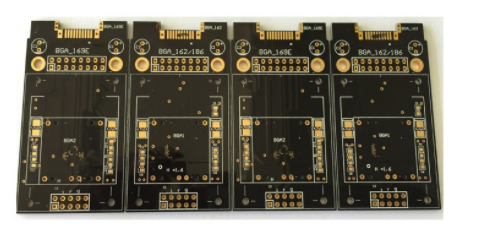What are the practical methods for PCB heat dissipation?
When it comes to circuit board heat dissipation, I am reminded of the mobile phones that we often use in our lives. Almost everyone has a mobile phone. It will heat up during use. It is caused by the internal components of the mobile phone. If it is not tight, it will hurt. Mobile phones will also damage the hardware and other consequences. Since there are many various components on almost every PCB board, these components of different sizes and shapes have different temperature resistance effects. For example, the working temperature of common IC materials is as high as 100 degree Celsius or higher. All electronic devices have different levels of power consumption, and the heating intensity varies with the size of the power consumption. If heat dissipation measures are not used, the equipment we use is still heating up continuously, which directly causes the device to fail due to overheating, leading to system disorder and reliability Will decline, the consequences are unimaginable, therefore, the heat dissipation of the circuit board is particularly important.

The direct cause of PCB heating is chemically speaking, the first is the power carrying capacity of the component itself. If the power carrying capacity is small, the component will generate heat and the heat will be conducted to the circuit board. The second is that the high-current circuit design on the circuit board is not reasonable.
1. When the heat dissipation environment of the circuit board is not good, if it is too close to some heating or radiator components, it is also a sealed circuit board, and there is no necessary ventilation channel to cause the heat to be unable to dissipate, and the heat will slowly accumulate and cause the circuit The board is hot. It is recommended that if you only rely on natural air flow to dissipate heat without good heat dissipation conditions, we must reasonably plan the placement of components. First of all, it is best not to place large components at the position of the air inlet, or place it in the heat dissipation. Good location.
2. For temperature-sensitive devices, it is best to place them in a low temperature area, such as thermistors, because thermistors have great changes in temperature.
3. For some components with serious heat generation, avoid placing them together, and distribute them on the circuit board as evenly as possible. If there is a fan system for heat dissipation, it should be considered to be concentrated and the heat should be close to the other side of all components., And the left and right components are best arranged in a vertical (horizontal) way to facilitate heat dissipation.
4. For high-power devices, such as transistors, amplifiers, etc. can be placed on the edge of the circuit board, so as to reduce the effect of heat radiation on the surrounding heat.
5. Avoid the concentration of hot spots on the PCB components, and distribute the power evenly on the PCB board as much as possible.
6. For components with serious heat generation such as switch tubes, heat sinks can be added, and high thermal conductivity insulating silicone material heat dissipation paste can be added at the same time. This is a material with good thermal conductivity, and the heat sink makes the components emit better heat Because of this, high-frequency switching power supplies basically use switching tubes with heat sinks. When the output power is very large, a heat sink must be added. There are also some components that are resistant to high temperatures. It goes without saying that its cost is for us to compromise.
Having said that, in addition to the strict uniform distribution of components in the PCB design process, attention should also be paid to areas with too high power density. In order to ensure the normal operation of the entire circuit, thermal efficiency analysis is also required, such as some professional PCBs. The thermal efficiency index analysis software module added in the design software can help designers optimize circuit design and avoid the annoyance of circuit board heating to a certain extent. The above practical knowledge about circuit board heat dissipation hopes to help everyone.